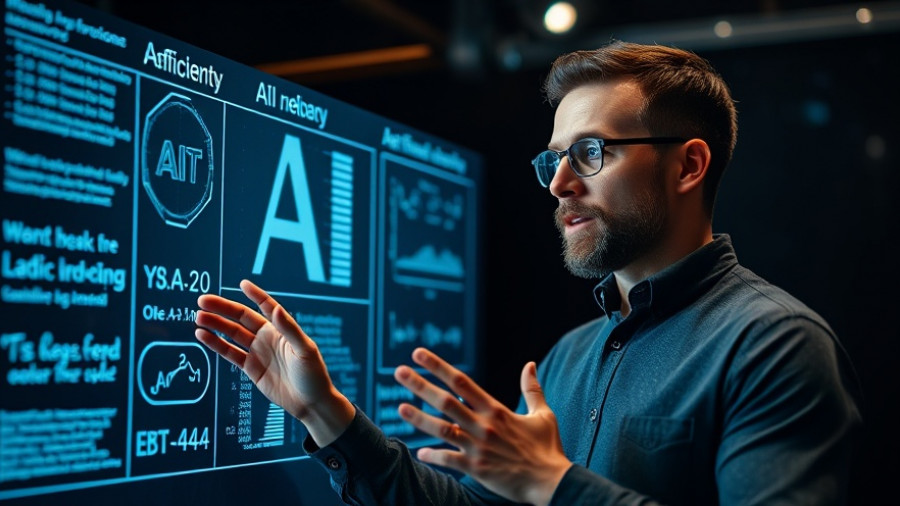
Understanding the Role of AI Cards in Modern AI
Artificial Intelligence (AI) is an incredibly powerful yet complex field. As technologies evolve, such as Agentic AI, the excitement around AI's potential often leads to confusion—particularly about how to implement these innovations effectively. With numerous applications and possibilities, a coherent strategy is essential for organizations looking to integrate AI across their operations.
In 'How AI Cards, Agents, & Accelerators Simplify Complex AI Workflows,' the discussion dives into AI cards, exploring key insights that sparked deeper analysis on our end.
Simplifying Complexity: The Concept of AI Cards
A fundamental part of simplifying AI workflows is the introduction of AI cards. These hardware elements can range from small silicon chips integrated into processors to larger, standalone units like Graphics Processing Units (GPUs). Understanding what AI cards are and where they fit in the system mitigates the chaos associated with their deployment.
AI Cards vs. Accelerators: What’s the Difference?
An AI card generally refers to any hardware that accelerates AI processes. In contrast, hardware accelerator cards are specifically designed for targeted AI tasks. This distinction is critical; while a general-purpose AI card might deliver varying levels of efficiency, dedicated AI accelerators boast enhanced performance for specified functions. For businesses, choosing the right type of card depends on their unique requirements.
Efficiency Metrics: How AI Cards Impact Performance
The efficiency of AI operations can be measured using parameters such as result accuracy, processing speed, and the energy consumed during tasks. Implementing a general-purpose card may yield acceptable results for some scenarios; however, optimized hardware like Tensor Processing Units (TPUs) or Neural Processing Units (NPUs) can significantly enhance performance in targeted applications. This increased efficiency can lead to faster decision-making and improved operational adaptability for organizations.
A Diverse Ecosystem: Why Different AI Cards Matter
The variety of AI cards available reflects the diverse applications within different industries. While some tasks might only require basic processing capabilities, more complex operations—such as those involved in healthcare diagnostics or real-time fraud detection—necessitate sophisticated and optimized cards for accurate processing. This diversity allows businesses to choose the right tools for their specific needs, which can be critical in a competitive market.
The Future of AI Workflows with Agentic AI
Agentic AI introduces the promise of autonomous decision-making within enterprise AI systems. By utilizing multiple AI cards paired with agentic capabilities, organizations can streamline complex data processing requirements while optimizing not just individual tasks but the workflow lifecycle. For instance, integrating AI cards can enhance real-time processing for fraud detection by utilizing a hybrid approach with models that execute tasks simultaneously.
Opportunity Trends: What's Ahead for AI Integration
As AI technology continues to develop, the alignment among AI cards, accelerators, and agentic AI will likely streamline processes and foster innovative solutions. The real challenge lies in determining how many models and cards to implement for specific use cases, but the potential gains from simplified workflows are substantial. Enhancing the underlying architecture of AI integration strategies could potentially lead businesses to a new frontier in automated decision-making and logistics management.
In conclusion, navigating the complex landscape of AI technologies like AI cards and agentic AI may seem daunting, but the potential benefits are worth the effort. By investing in the right tools and systems, organizations can pave the way to a more efficient and agile use of AI technologies. So, are you ready to embrace these innovations and elevate your AI strategy?
 Add Row
Add Row  Add
Add 




Write A Comment